Montessori Materials
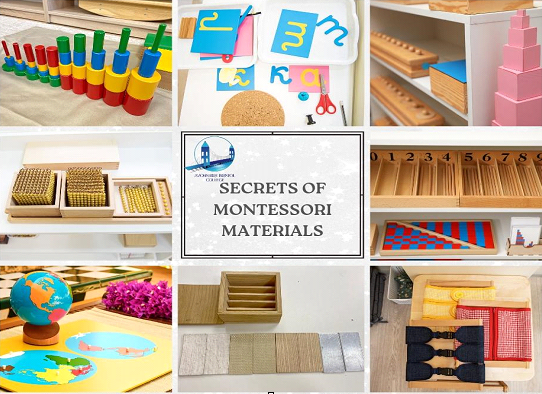
In Montessori classrooms use specific learning materials, but what are they?
Many of these
Materials are somewhat of a mystery, a wide range of unique materials is used to support hands-on learning and the development of various skills. These materials are specifically designed by Dr.Maria
Montessori after she observed that children learn most effectively through direct experience and this led her to design a number of multi-sensory, sequential, interactive and self-correcting materials for mathematics, sensory development, language, science, history and geography.
The materials facilitate learning which builds from the concrete and sensorial to the abstract in constructing the child’s knowledge.
Here, I will highlight some of the notable Montessori materials and their importance:
1. Sensorial Materials: These materials focus on stimulating the senses and refining sensory
perception. For example, the Pink Tower, which consists of a series of cubes varying in size, helps
children to understand concepts such as size then grow with them to understand the spatial
relationships. The purpose of sensorial materials is to support the development of concentration,
observation, and discrimination skills.
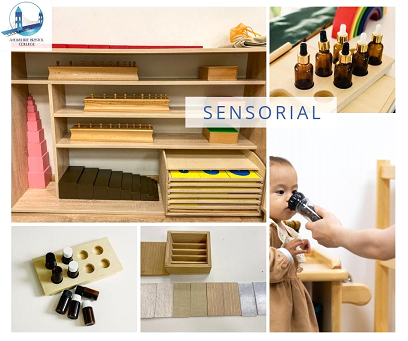
2. Practical Life Materials: Practical life materials are everyday objects that children can use to learn life skills and develop fine motor skills. These materials not only help children gain independence and improve coordination but also foster concentration and a sense of order. Examples include
pouring water from one jug to another, using tongs to transfer objects, or buttoning and zipping clothes. Just imagine the children’s feelings while doing activities similar to the adult one ??!!!
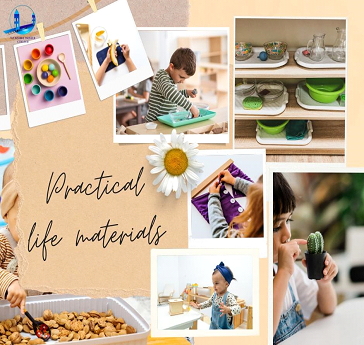
3. Math Materials: Montessori math materials are designed to provide concrete, hands-on experiences for children to learn mathematical concepts. As the Golden Beads, for instance, are used to teach place value, addition, subtraction, multiplication, and division. By manipulating and exploring these materials, children develop a solid understanding of abstract mathematical concepts.
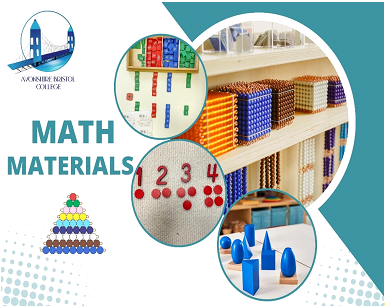
4. Language Materials: Language materials in a Montessori classroom aim to foster literacy and language development. The Moveable Alphabet, for example, consists of individual letters that children can arrange to form words and sentences. This material promotes letter-sound recognition, spelling, and writing skills.
Other language materials include phonetic object boxes, sandpaper letters, and reading comprehension activities.
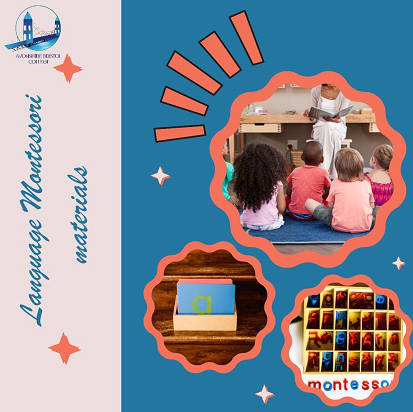
5. Cultural Materials: Montessori education also emphasizes cultural studies, including geography, history, and science. Materials such as puzzle maps, timelines, and classification cards help children explore and understand concepts related to different cultures, the natural world, and the passage of
time.

The unique Montessori materials play a crucial role in supporting hands-on learning and the development of various skills. They provide concrete experiences, encourage exploration and discovery, and allow children to work independently and at their own pace. The self-correcting nature of these materials enables students to learn from their mistakes, fostering problem-solving skills and a sense of self-assessment. Overall, the utilization of Montessori materials enhances the effectiveness of the learning process and promotes holistic development in children.
Why are Real Materials so important in the Montessori Classroom???
Montessori materials are commonly made of natural materials such as wood, metal, glass, cotton, and wicker. There are several reasons for this choice:
First, natural materials have a sensory appeal and are engaging for young children, stimulating their curiosity and exploration by allowing children to classify, compare, and order them using their five senses.
Second, they provide a more realistic representation of the world, allowing children to make connections between the materials and the nature and understanding their responsibility to keep the environment sustainable.
Third, natural materials are often more durable, eco-friendly than plastic materials, which can fade, break, or pollute the environment. Also, they are long-lasting compared to synthetic materials, making them suitable for repeated use in the Montessori environment.
Finally, Natural materials are simple and appealing to children, creating opportunities for open-ended exploration and discovery. The use of materials from nature aligns with the Montessori philosophy of fostering a connection with nature and the environment.
